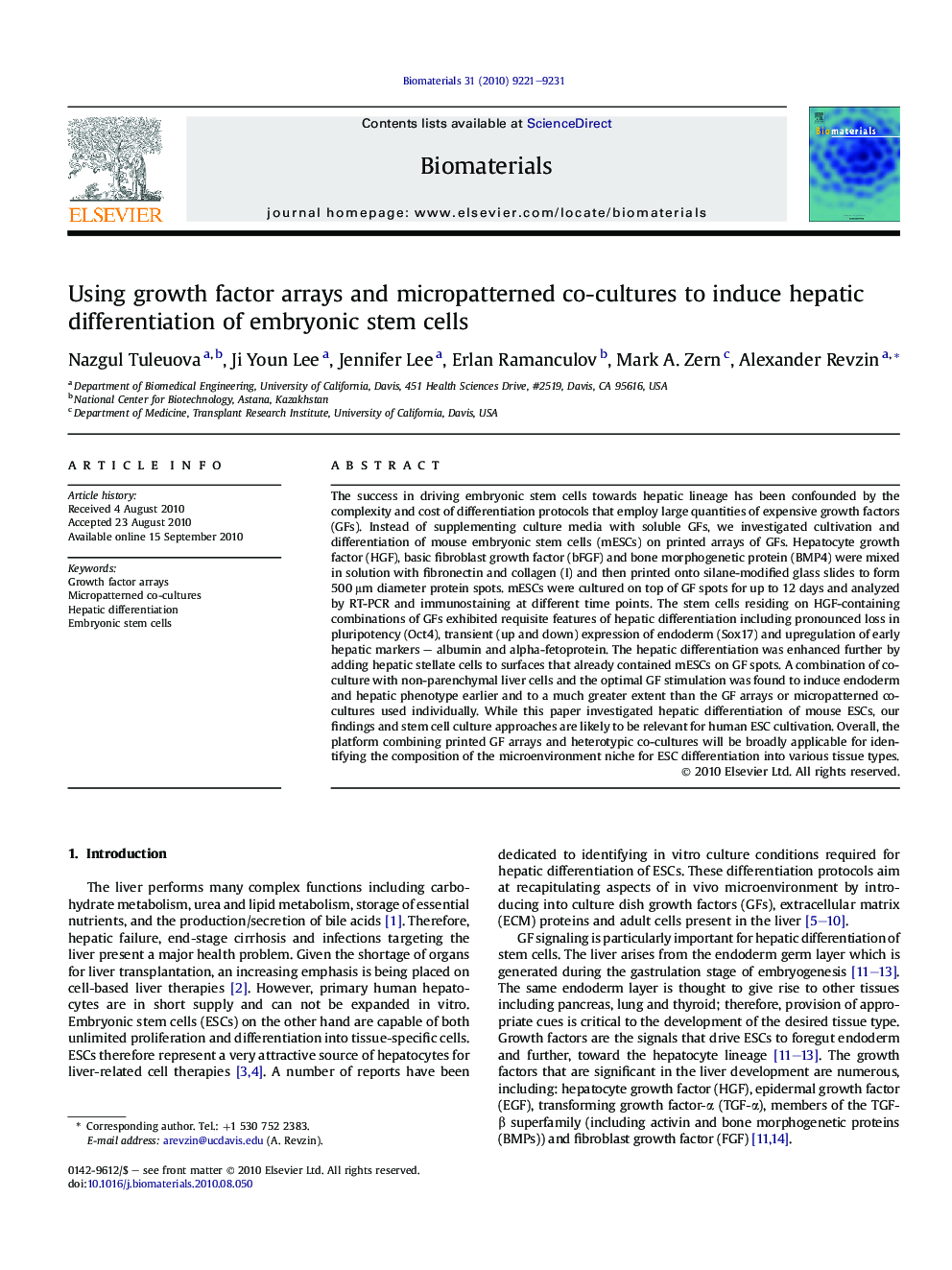| کد مقاله | کد نشریه | سال انتشار | مقاله انگلیسی | نسخه تمام متن |
|---|---|---|---|---|
| 8541 | 597 | 2010 | 11 صفحه PDF | دانلود رایگان |

The success in driving embryonic stem cells towards hepatic lineage has been confounded by the complexity and cost of differentiation protocols that employ large quantities of expensive growth factors (GFs). Instead of supplementing culture media with soluble GFs, we investigated cultivation and differentiation of mouse embryonic stem cells (mESCs) on printed arrays of GFs. Hepatocyte growth factor (HGF), basic fibroblast growth factor (bFGF) and bone morphogenetic protein (BMP4) were mixed in solution with fibronectin and collagen (I) and then printed onto silane-modified glass slides to form 500 μm diameter protein spots. mESCs were cultured on top of GF spots for up to 12 days and analyzed by RT-PCR and immunostaining at different time points. The stem cells residing on HGF-containing combinations of GFs exhibited requisite features of hepatic differentiation including pronounced loss in pluripotency (Oct4), transient (up and down) expression of endoderm (Sox17) and upregulation of early hepatic markers – albumin and alpha-fetoprotein. The hepatic differentiation was enhanced further by adding hepatic stellate cells to surfaces that already contained mESCs on GF spots. A combination of co-culture with non-parenchymal liver cells and the optimal GF stimulation was found to induce endoderm and hepatic phenotype earlier and to a much greater extent than the GF arrays or micropatterned co-cultures used individually. While this paper investigated hepatic differentiation of mouse ESCs, our findings and stem cell culture approaches are likely to be relevant for human ESC cultivation. Overall, the platform combining printed GF arrays and heterotypic co-cultures will be broadly applicable for identifying the composition of the microenvironment niche for ESC differentiation into various tissue types.
Journal: Biomaterials - Volume 31, Issue 35, December 2010, Pages 9221–9231